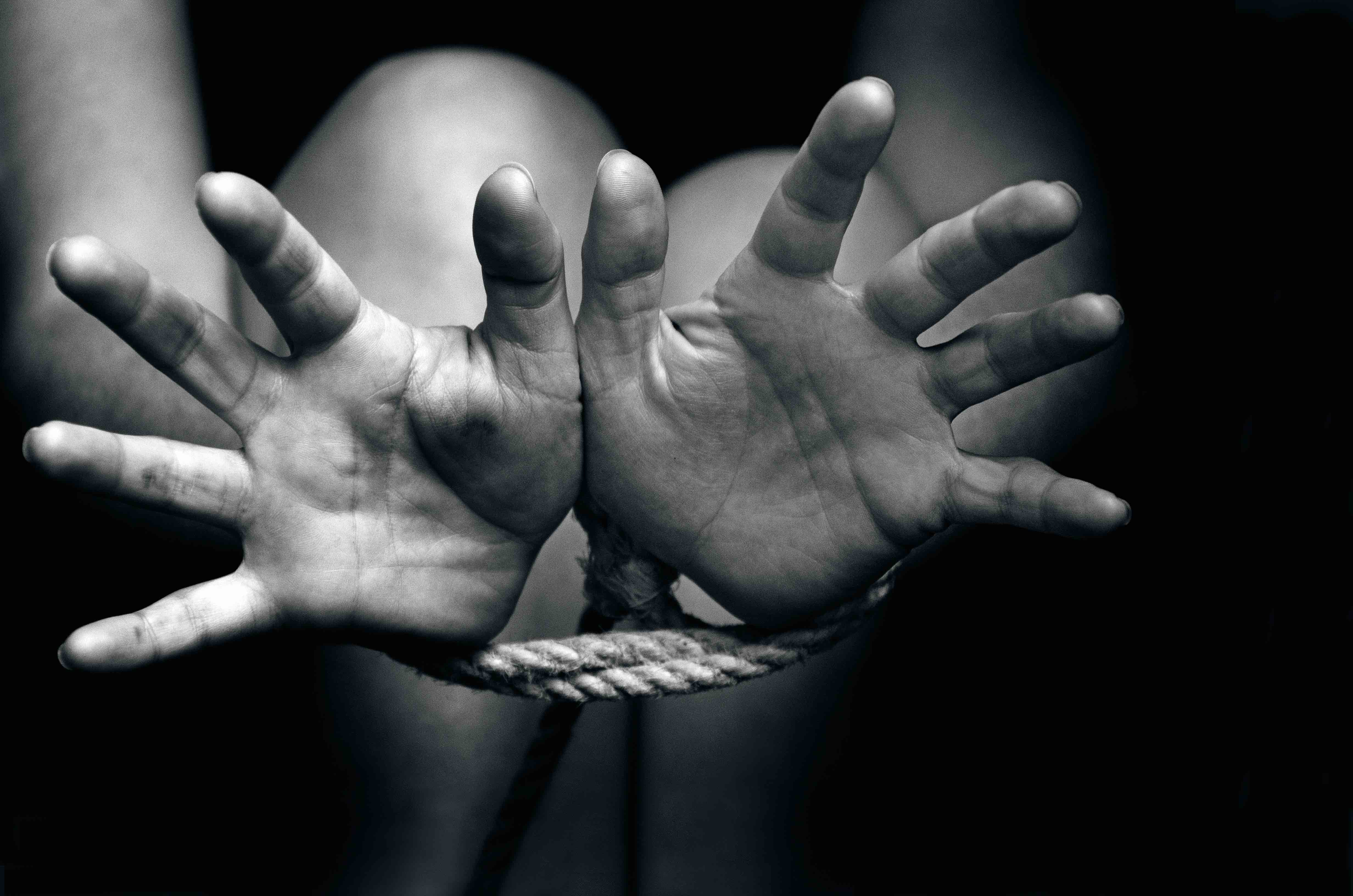The Push and Pull of Child Prostitution

“Inhen aise tayyar karo, ki customers ko inme apni beti nahi mashooka nazar aani chaaiye”,( Dress them in a way so that our customers must see their beloveds, not their daughters in them!)
This one line from the very famous bollywood movie ‘Mardani’, aptly depicts the psychology behind the whole business of child prostitution.
Lipi, a 14 year old girl in Dualatdia, the largest brothel of Bangladesh, is sitting on the steps of her room feeding her eight months old son. Awaiting her customers, she occasionally looks down at the baby, concerned may be about the future or probably the baby needs to feed fast, before the customer arrives. She winks, whistles and throws down her duppatta on almost every prospective client.
“When did you start this?”
“I was nine then, I had not even started bleeding. I have a good family back in Delua district.”
“How did you land here?”
“I was returning from school with my younger brother when a person started following us. The faster we got, the more they became. By the time we reached the river almost panting, they were six and threw my brother in the river and carried me, stuffed in a bag to this place. I don’t know what happened to my brother.”
“Didn’t you try to save yourself?”
“Who will not? I cried and I bled. When I got my first customer, he forced himself and after he sank his teeth almost everywhere on my body, I realised, now I have nowhere to go. I am also given a medicine, this one..” showing it to me.
It is oradexon given to cattle in some countries of south east Asia to fatten them. She said, it prepared her for many customers and helped her in bringing more. Her earnings are not her look out as all of them are frequently taken away by her ladies, in exchange of food and “better” customers.
This is the plight of one child prostitute, but the story of many. Bangladesh is one such example. There are innumerable cases of abduction and trafficking happening every day, in almost every corner of the world.
200,000 children are fed into prostitution network each year.(UNICEF )
How dictionary defines Child Prostitution:
“Child prostitution designates the use of children for sexual activities in exchange for remuneration or another form of retribution (gifts, food, clothes, etc). This activity is included under the umbrella term of sexual exploitation.”
How numbers define it:
- According to UNICEF and ILO [International Labour Organisation] there are 40,000 child prostitutes in Sri Lanka and 6.4% of the country's child population gets pregnant.
- Child prostitution in Thailand involved 800,000 children under the age of sixteen in 2004.
- According to Crimes Against Children research Centre (CCRC), the numbers of juvenile prostitutes within the United States range from 1,400 to 2.4 million.
India is a source, destination, and transit country for trafficking for many purposes such as commercial sexual exploitation. Majority of the trafficking is within the country but there are also a large number trafficked from Nepal and Bangladesh. But 40% of prostitutes are children, and there is a growing demand for young girls in the industry.
NGOs estimate that 12,000 - 50,000 women and children are trafficked into the country annually from neighbouring states for the sex trade. Thousands of girls are trafficked from Bangladesh and Nepal. 200,000 Nepalese girls under 16 years are in prostitution in India. An estimated 1,000 to 1,500 Indian children are smuggled out of the country every year to Saudi Arabia for begging during the Hajj. (Source: ChildLineIndia and IBTimes.com)
What makes a child an easy target?
The docility of the children or their inability to defend themselves could be one out of few irrational reasons. A study also states that the prevailing myths around virginity and sexual interaction with children can help cure certain diseases, which is primarily believed in some parts of Asia, holds strong grounds for promoting child sex trade. The softness of a child, which idealistically should have attracted protectors are on the contrary building up on perpetrators and putting them on an irrevocable risk of life and death.
There are also other factors contributing towards the growing numbers under commercial sexual exploitation of children and they can be broadly categorised as the push and the pull factors:
The Push Factors:
- Poverty
- Orphans
- Lack of Education
- Unemployment
- Broken Families
The Pull Factors:
- Money & Gifts
- Sugar Daddies
- Third party perception of better life
- Looked upon as an opportunity to break free and travel different places( mostly categorised as a myth, due to atrocious conditions undergone during such travels)
Child Prostitution thus encircles the real world alongwith certain fallacies tied up with the innocence of the victims. Their apathy following this trade is heart wrenching and calls for serious intrusion by the law makers and the respective governments of the countries and the world. It is a societal chronic sickness, which if not cured will turn into an epidemic and then remedial will be a far cry.
The ripping apart of innocence has in a way tarnished the humanity and we will not be able to survive with broken spirits for long. In this era of technology and globalisation, there is one cry, which trespasses the boundaries of nationality, colour and race..and that is the cry of Lipi and many more Lipis, in the network of commercialisation of innocence and life.



